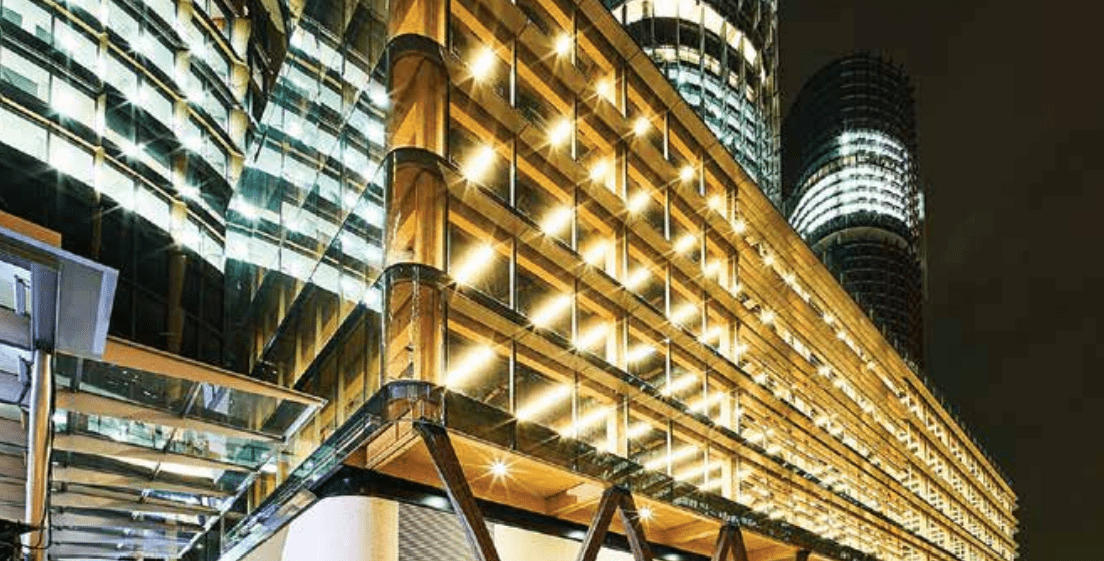
International House In Sydney… Certified Timber Winner At The World Architecture Festival
Originally published in https://www.responsiblewood.org.au/category/bulletins/
RESPONSIBLE WOOD went global with the Australian PEFC-endorsed forest certification scheme, a major feature in the highly prestigious World Architecture Festival and Awards.
Hosted in Amsterdam in December, the festival brought together the best of the best – the world’s largest, live, inclusive and interactive architectural awards program and festival.
Indeed, Australia was heavily represented in the panel of judges, the short list of project entrants and in the honour roll of winning entrants.
Returning from Amsterdam, Responsible Wood director Mark Thomson, chief judge of the PEFC-supported Best Use of Certified Timber category, was impressed with the calibre of the global entrants.
“It was fantastic to see certified timber in the international context,” he said. You might have thought cross-laminated timber was commonplace in Europe, which it is on smaller scale projects. However, Australia is embracing CLT and timber generally in larger commercial projects.”
Talking about the winning entrant, International House in Sydney, designed by Tzannes and developed by Lend Lease, Mark Thomson commended the use of timber in breaking new ground in commercial buildings. “Buildings at Barangaroo and the larger projects proposed around the country, including 25 King Street in Brisbane, are sustainable and innovative,” he said.
“They appear to be breaking new ground in building spans, speed of construction, appearance and compliance matters including fire ratings – that’s my personal opinion,” Mark said. And it wasn’t just International House that was turning heads.
Krakani Lumi, an eco-holiday standing camp in Tasmania, designed by Taylor and Hinds Architects and inspired by the traditional constructions of Tasmania’s first people, was commended by the judging panel as an outstanding entrant.
“It really is a remarkable project; land rights preservation is a key feature of forest certification and it’s a key feature of AS 4708 and the Australian Standard for Sustainable Forest Management,” Mark added.
At an impressive gala dinner with more than 1000 aendees, the jury of the World Architecture Festival in Amsterdam has awarded the Best Use of Certified Timber Prize, supported by PEFC. The winner is International House in Sydney, designed by Tzannes Architecture and built by Lendlease with PEFCcertifi ed cross-laminated timber supplied by Stora Enso. With its seven floors, the International House is the world’s tallest all-commercial building constructed from engineered timber. It catches the eye with a clear glass façade that generates interest by revealing the inside timber structure to the public.
Representing a very low carbon outcome, both in construction and operation, the building sets new standards in sustainable construction. With certified timber as the main construction material, the building stores large amounts of carbon in its fabric. While the adjacent harbour cools the building through modern heat exchange technology, photovoltaic panels on the roof generate renewable energy. The use of prefabricated timber elements reduced the waste by 25%, compared to a conventional building. The timber construction is not only good for the climate, but also for the people working in it. “Timber has a very strong effect on humans, both psychologically and physically,” says Jonathan Evans, director of Tzannes Architecture.
“We respond to the warmth of the timber, the character, the natural heritage of the material. It lowers our blood pressure and heart rate and improves our cognitive ability.” With the many benefits for climate and health, timber is gaining ground as a construction material. “The variety and geographic diversity of the projects entered into the prize verified that certified wood is a growing global trend,” Mark Thomson, architect and jury member of the World Architecture Festival jury, said.
“The PEFC certification provided confidence to architects that sustainability issues were correctly addressed in their projects,” said Mark who is a director of Responsible Wood. “The judges of the best-certified wood prize were impressed at the high quality of projects submitted for the award.” Dedicated to celebrating and sharing outstanding architecture, the festival awards prizes in various categories. This year, PEFC and the festival awarded the Best Use of Certified Timber Prize for the first time.
The prize recognises architects and project teams for their use of certified timber as a main construction material for buildings outstanding in sustainability, innovation, quality or aesthetics. Some 40 architects from more than 20 countries entered projects into this category. Nine shortlisted candidates presented their projects at the festival and fascinated the audience with their innovative constructions and background stories. “Seeing the alchemy with which architects transformed certified timber into magnificent living and working space was beyond awe-inspiring and a fitting testament to the numerous managers of PEFC certified forests all around the world,” PEFC International CEO Ben Gunneberg said.
In addition to the winning project, two more buildings were honoured – Krakani Lumi Camp by Taylor and Hinds Architects as featured by Responsible Wood in January, and the Royal Academy of Music Theatre and Recital Hall by Ian Ritchie Architects, which was highly commended.


